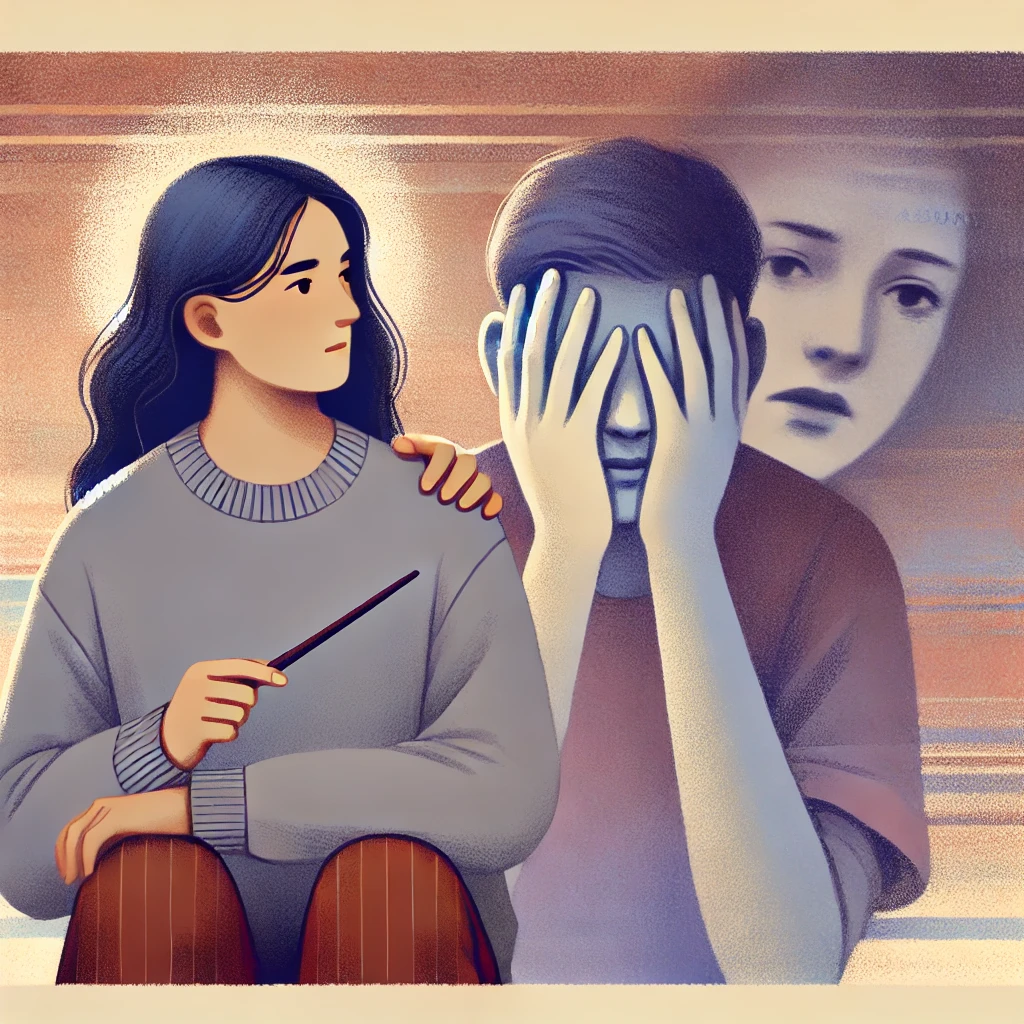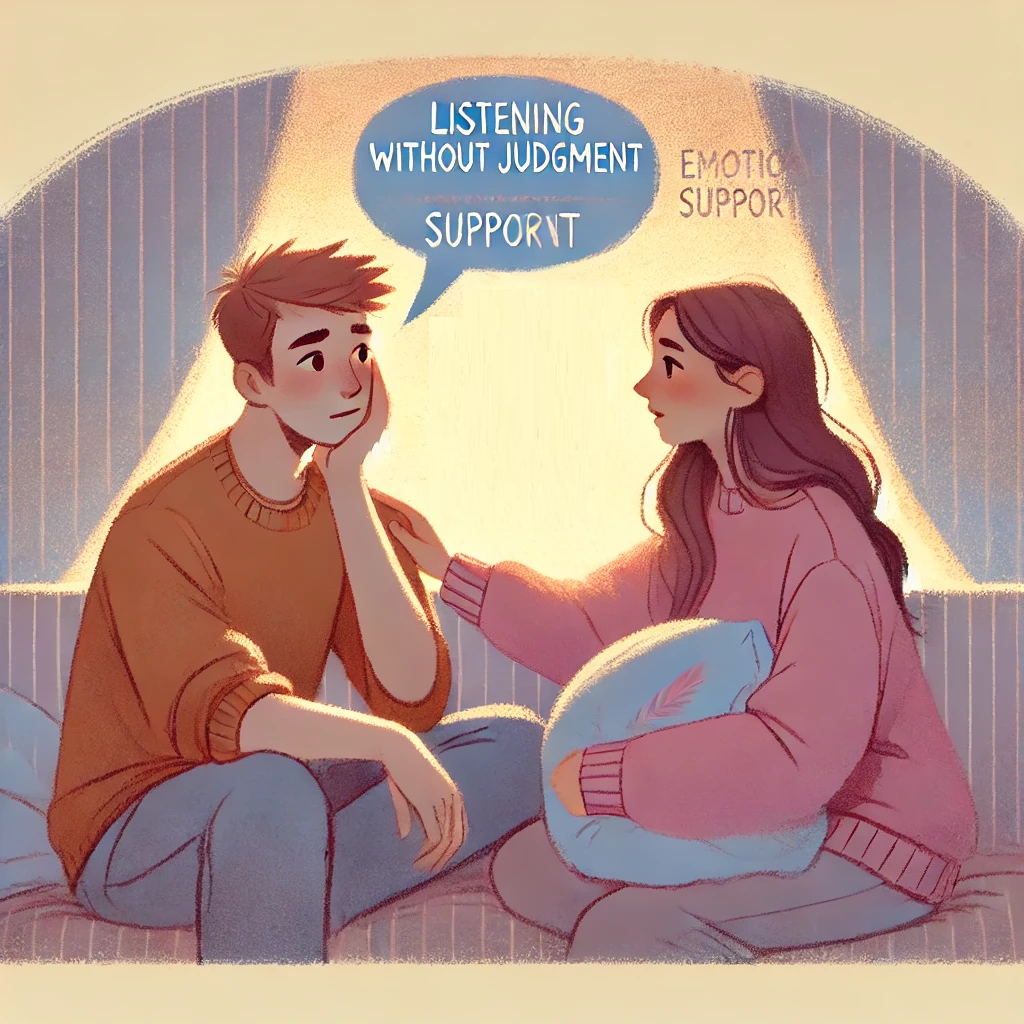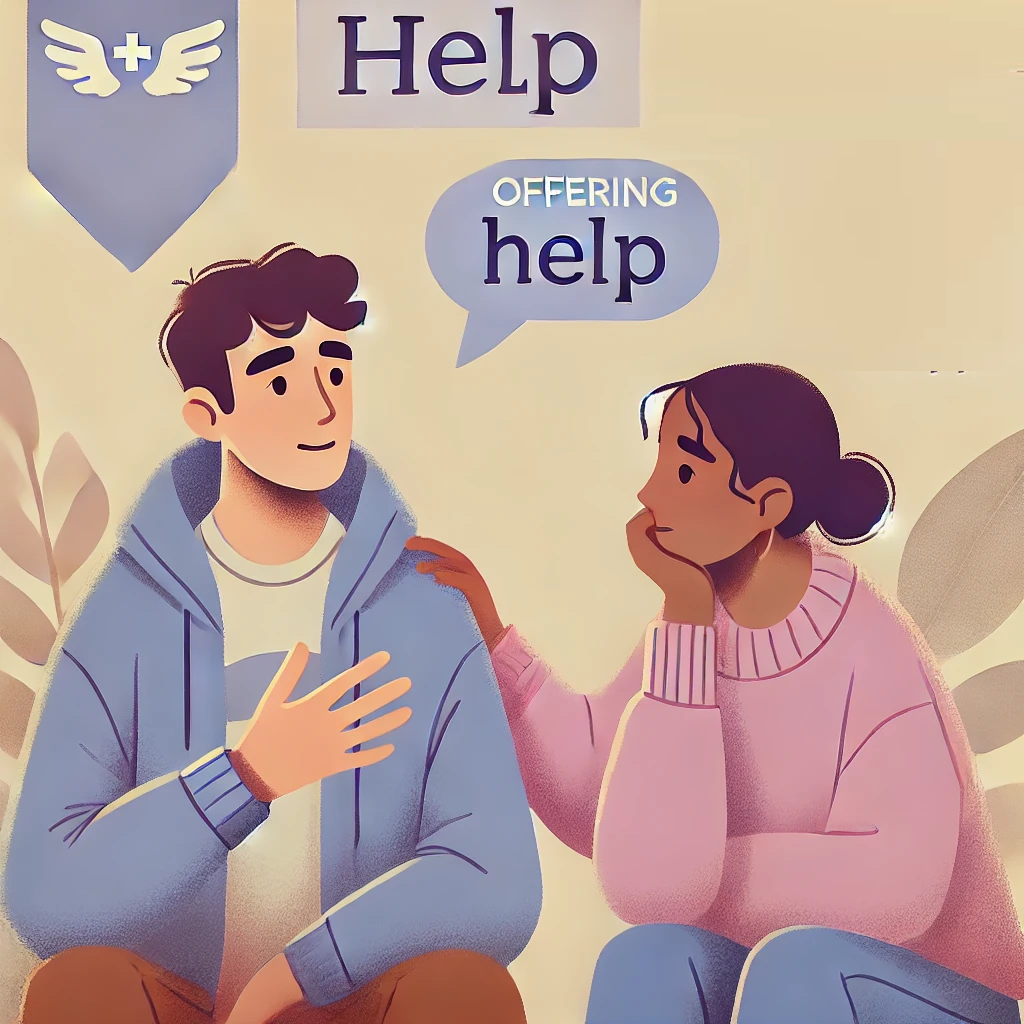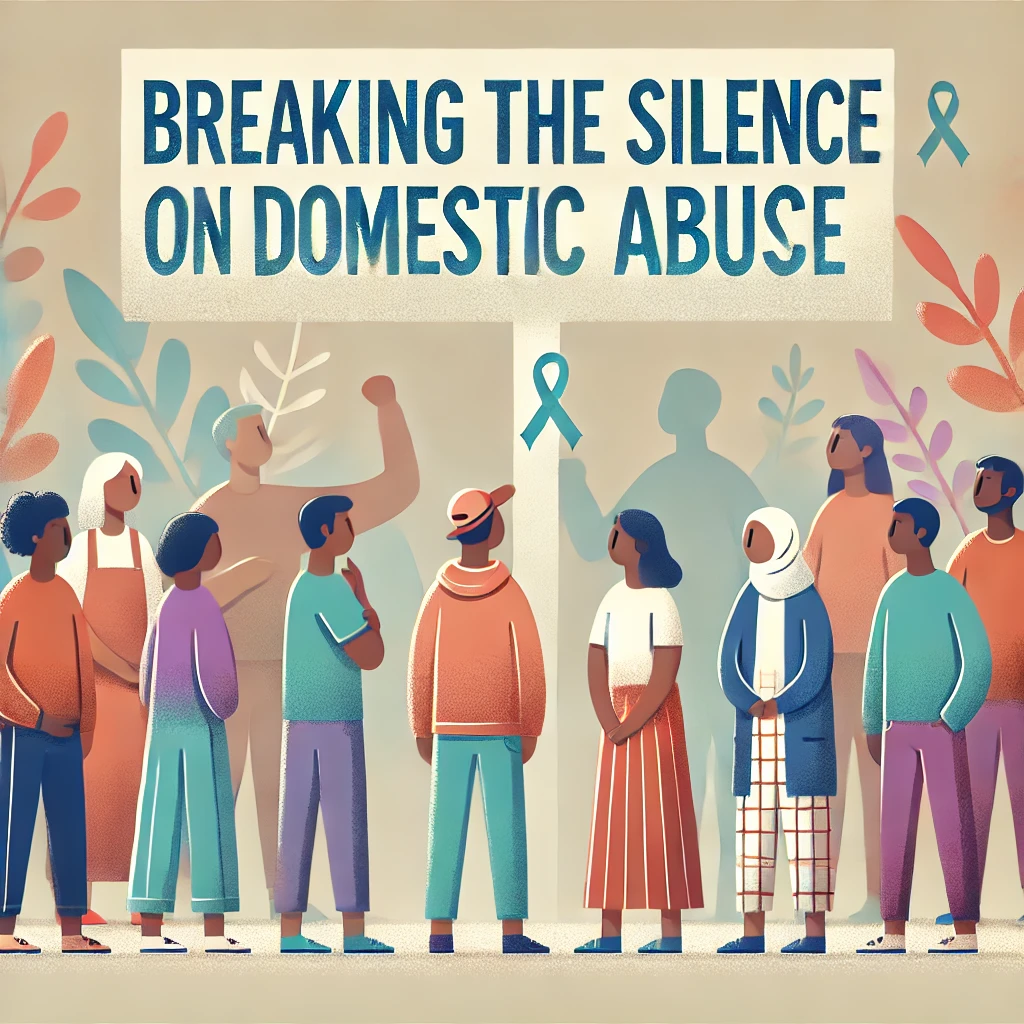
How to Help a Friend Who Might Be a Victim of Domestic Abuse
Watching a close friend struggle in an abusive relationship is heartbreaking. You might notice subtle clues – a change in their behavior, unexplained bruises, or constant worry about pleasing their partner – and feel terrified for their safety. Domestic violence is more common than many realize; at some point in your life, you will likely know someone who is being abused by their partner (How to Help a Friend Affected by Domestic Violence). Yet, when faced with this situation, it’s hard to know what to do or say. You may worry about overstepping or saying the wrong thing, but don’t let fear of making a mistake stop you from reaching out (How to Help a Victim of Domestic Violence). Your support and action could literally save your friend’s life.
In this guide, we’ll walk through how to help a friend who might be a victim of domestic abuse. From recognizing the warning signs of domestic violence to starting a conversation and encouraging professional help, each step is handled with compassion and urgency. Helping a friend escape abuse is not about “rescuing” them by force – it’s about empowering them to make safe choices while you stand by their side with support and understanding. Here’s how you can make a difference.
Recognize the Warning Signs of Domestic Abuse

Often, abuse victims hide what’s happening out of fear or shame, so the warning signs might be subtle. Pay close attention to your friend’s behavior and what they say (or don’t say). Common warning signs that someone may be experiencing domestic abuse include (How to help a friend who is being abused):
- Unexplained injuries or frequent bruises: Your friend has injuries they try to cover up or explain away with flimsy excuses. They might say they are just clumsy or had an “accident,” but the frequency or pattern of injuries is concerning (How to help a friend who is being abused).
- Extreme behavior changes: They have become anxious, depressed, or unusually quiet (How to help a friend who is being abused). They might seem fearful and on edge, as if they’re “walking on eggshells” around their partner.
- Isolation from friends and family: They stop spending time with loved ones (How to help a friend who is being abused) or suddenly cancel plans. The abusive partner may be preventing them from seeing others or monitoring their communications.
- Constantly checking in or seeking permission: If your friend is always worried about keeping their partner updated on where they are, or they need permission to make even small decisions, that’s a red flag.
- Their partner’s controlling or jealous behavior: You notice the partner belittling your friend in public, acting insanely jealous or possessive (How to help a friend who is being abused), or controlling all the finances and decisions.
- Excuses for their partner’s behavior: Your friend apologizes for their partner or makes excuses for them (How to help a friend who is being abused) (“They’re just stressed out” or “It’s only because they had a bad childhood”).
- Personality shifts: Perhaps your once-outgoing, confident friend has lost their self-esteem and confidence. They might defer to their partner on everything now, or you see a spark in them fade away.
Keep in mind that victims often minimize the abuse or lie about it because they are scared of what will happen if they tell the truth. They might also feel shame or blame themselves. If you notice several of these signs, trust your instincts. Don’t wait for absolute proof or for your friend to come to you – abuse often escalates over time and can become life-threatening if nothing changes. In fact, domestic violence is so dangerous that over half of female homicide victims are killed by a current or former intimate partner (Helping a Friend Who May be a Victim of Abuse | The Maryland People’s Law Library). It’s far better to say something and show you care than to stay silent and risk the abuse getting worse.
Approach Your Friend with Empathy and Privacy

Once you suspect something is wrong, plan to start a conversation in a safe, private setting. Pick a time when you can be one-on-one without interruptions – maybe during a quiet coffee meet-up or a walk, when the abusive partner isn’t around (How to help a friend who is being abused). Make sure your friend feels safe and isn’t in a rush. You might start by saying something gentle yet specific, like: “I’ve noticed you seem upset lately, and I’m worried about you. Is everything alright at home?” or “I’m concerned about your safety. I saw those bruises and I just want to help if you need it.”
When you bring up the topic, speak from a place of love and concern, not accusation. Use “I” statements that focus on your feelings and observations, to avoid sounding judgmental. For example: “I feel worried when I see you getting hurt” or “I care about you and it scares me to think you’re not safe.” This opens the door for your friend to talk, without making them feel attacked or embarrassed.
Prepare for denial or defensiveness. Your friend might deny the abuse or downplay it, possibly out of fear or shame. They might even defend their partner (“It’s not as bad as it looks,” “They’re going through a lot”). Don’t get angry or frustrated if this happens. Stay calm and reaffirm your concern: “I understand. I just want you to know I’m here for you no matter what.” Sometimes, just planting the seed that you’re a safe person to confide in will set the stage for them to open up later. The goal at this stage isn’t to force them to admit anything, but to let them know you care and are available to help.
Listen Without Judgment and Validate Their Feelings

If your friend does begin to share what’s happening, listen patiently and without judgment (How to Help a Victim of Domestic Violence). This may be the first time they’re speaking about the abuse out loud. Let them take their time. Survivors of domestic abuse often feel a swirl of conflicting emotions – love, fear, guilt, shame, hope, and despair all at once. They might say things that surprise you, like expressing love for the abusive partner or worry about what will happen if they leave. It’s important not to criticize or dismiss their feelings.
Assure your friend that you believe them and that nothing they did justifies the abuse. Say explicitly, “What’s happening is not your fault. You don’t deserve to be treated this way.” Many victims have been blamed by their abuser for “causing” the violence; hearing from you that they are not to blame can be incredibly powerful. Validate their experience: “It sounds like you feel trapped and scared – that’s completely understandable. Anyone would feel overwhelmed in your situation.” Let them cry, vent, or even sit in silence if they need to. Sometimes just being a compassionate, non-judgmental presence is the best help you can offer in that moment.
(Friend Comforting A Friend Photos, Download The BEST Free Friend Comforting A Friend Stock Photos & HD Images) When a friend breaks down and confides in you about abuse, your empathy and patience mean everything. Let them express their emotions freely. Often, just having someone gently listen as they cry or talk can provide immense relief and a sense that they’re not alone in this.
Avoid interrupting with quick fixes or ultimatums like “You have to leave them right now.” At this stage, your friend may not be ready or able to make big decisions. Instead of rushing to solve the problem, focus on hearing them out and reinforcing that you care. Simple phrases like “Thank you for telling me. I’m here for you,” or “It took a lot of courage to share this” can validate their trust in you. The fact that they’ve opened up is a huge step; honor it by giving them your full attention and support.
Support Them in Practical Ways (Without Pressuring)

Let your friend know you want to help in whatever way they are comfortable with. Ask open-ended questions like, “What do you need right now?” or “How can I support you?” They might not know the answer, as abuse can leave victims feeling helpless and unsure of their own needs. You can gently suggest some specific offers of help (How to help a friend who is being abused) so they know what’s available. For example:
- Be a safe person to talk to: Make it clear that you’re willing to just listen anytime they need to vent or when things get especially rough. Sometimes knowing they can call you in the middle of the night if they’re scared means the world.
- Offer practical assistance: Depending on your abilities and their comfort, you could offer to help with child care, provide a ride to appointments or support groups, or even just schedule regular check-in phone calls. If your friend decides to take steps to leave, you might help with tasks like finding a lawyer or a counselor, or looking up housing options.
- Create signals or code words: Work out a simple emergency signal your friend can use if they’re in danger and need help immediately. For instance, they could agree to text you a innocuous code phrase or emoji that you’ve pre-decided means “call the police” or “come get me now.” This way, if the abuser is watching, they won’t know what the message really means.
- Help document the abuse (if safe to do so): If your friend is open to it, encourage them to keep any evidence of abuse – photos of injuries, threatening messages, etc. This can be useful later for legal action or obtaining protective orders. You could offer to store copies of this evidence for them if they fear it being discovered.
While offering help, be careful not to take control or make decisions for them. One of the cruelties of domestic abuse is that it strips away the victim’s power and sense of control. As a friend, you want to give that power back. Support their decisions, even if those decisions are to stay with the partner for now. It might be frustrating if you desperately want them out of the toxic situation, but remember that the choice has to come from them. You can say, “I will support you whether you decide to stay or leave. You know your situation best, and I want you to be safe and happy.” Emphasize that you’re there unconditionally – not only if they agree to do what you think is best.
It’s okay to gently share your concerns (“I do worry what might happen if nothing changes”), but avoid pressuring them to take actions they’re not ready for (How to help a friend who is being abused). For example, instead of “You need to leave him now,” try “I’m scared about what might happen if this continues. Whenever you’re ready to make a change, I’m here to help.” This way, you express concern without issuing an ultimatum. The last thing you want is for your friend to shut you out because they feel judged or pushed.
Understand that leaving an abusive relationship is incredibly difficult and even dangerous. Victims stay for many complex reasons: love, hope that the abuser will change, financial dependence, children, or fear of worse violence if they attempt to leave. They may leave and go back multiple times before leaving for good (How to help a friend who is being abused). As a friend, your role is not to “rescue” them but to walk alongside them through their journey, no matter how long it takes. If they aren’t ready to leave, continue to be supportive and let them know you respect their choices. By staying in their life, you ensure that when they are ready or if things get worse, they have someone to turn to.
Help Them Create a Safety Plan
Whether your friend plans to stay for now or is thinking about leaving, encourage them to develop a safety plan. A safety plan is a personalized, practical plan to stay safe while in the relationship, preparing to leave, or after leaving. You can help brainstorm and organize this plan. Here are some key elements of a safety plan:
- Identify safe areas of the house & escape routes: If an argument starts, which rooms have exits or fewer dangerous objects? For example, the kitchen (with knives) or garage (tools) might be more dangerous – better to move to a room with a door to the outside if possible.
- Pack an emergency bag: Put together a bag with essentials in case they need to leave in a hurry (Helping a Friend Who May be a Victim of Abuse | The Maryland People’s Law Library). Include important documents (IDs, passports, birth certificates), a change of clothes, some money, spare keys, necessary medications, and phone numbers of trusted contacts or shelters. This bag should be hidden somewhere the abuser won’t find it – maybe at your house or with another trusted friend.
- Choose a code word: As mentioned earlier, decide on a code word or phrase your friend can use in a call or text to secretly signal they are in immediate danger and can’t talk openly (How to help a friend who is being abused). Make sure they memorize at least one important phone number (like yours or a hotline) in case they lose their phone.
- Plan for children and pets: If your friend has kids or pets, include them in the safety plan. Know which neighbor’s house or family member could take the kids in an emergency, and consider setting aside some of the kids’ essentials (clothes, favorite toy, documents) in the go-bag. Similarly, if the fear of leaving pets behind is holding your friend back, see if you or someone else could temporarily care for the pet (Helping a Friend Who May be a Victim of Abuse | The Maryland People’s Law Library). Many domestic violence shelters work with animal shelters or foster networks to protect pets, because abusers often threaten or harm pets to control victims.
- Have emergency contacts and resources ready: Write down the numbers of domestic violence hotlines, local shelters, or supportive friends who could help at a moment’s notice. In a crisis, your friend may not have time to search for these. Also, agree on a plan for calling the police. For instance, if the code word is used, you will know to call 911 on their behalf. Make sure your friend knows that if violence is happening, they can and should call the police immediately – domestic violence is a crime, and their life could be at risk.
Helping your friend with a safety plan not only prepares them for worst-case scenarios, but also sends a clear message: you take their situation seriously and you will support them through it. It empowers them with options and measures that could save their life if things escalate. Be sure to keep the plan confidential and out of the abuser’s reach. Discuss it only in safe, private settings or through secure communications, since if the abusive partner discovers the plan, it could trigger more violence.
Connect Them to Professional Help and Resources
As a caring friend, you are a crucial support – but you’re not a replacement for professional help. Encourage your friend to reach out to people who are trained in handling domestic abuse situations. This might feel intimidating to them, so offer to help every step of the way. You might say, “There are people who deal with this every day and know exactly how to help. I can sit with you while you call, if you want, or even call for you to get some information.” Let them know there’s no pressure, but that these resources exist whenever they’re ready.
Some options include:
- Domestic violence hotlines: The National Domestic Violence Hotline (1-800-799-SAFE) is available 24/7 for confidential support (How to help a friend who is being abused). Trained advocates can provide advice, help create safety plans, and connect your friend with local services. There are also text and online chat options if your friend can’t speak freely on the phone. (If you’re outside the U.S., find your country’s equivalent hotline or helpline – many nations have one, and there are even international directories of domestic violence support lines.)
- Local shelters and advocacy groups: Every state and most cities have domestic violence agencies or shelters. They can often provide temporary housing, legal advocacy, support groups, counseling, and other resources. You can help research nearby shelters or organizations. Offer to accompany your friend to visit a shelter or meet with an advocate if they’re worried about going alone (How to help a friend who is being abused). Sometimes just walking through that door the first time is the hardest part – your presence can give them courage.
- Counseling and support groups: Encourage your friend to speak with a therapist who understands domestic trauma, or to join a support group for survivors. These professionals can help them process their emotions, rebuild self-esteem, and plan for the future. If your friend isn’t ready to talk to someone in person, there are also online support communities (just ensure any online activity is on a safe device the abuser can’t monitor).
- Legal assistance: If applicable, help them understand their legal options. This might include getting a protective order (restraining order) against the abuser, filing police reports to document the abuse, or seeking custody/legal advice if children are involved. Many domestic violence organizations can connect victims with free or low-cost legal aid. You could offer to go with your friend to the courthouse or a lawyer consultation for support (How Can I Help a Friend Who Is In an Abusive Relationship?). Ensure they keep legal papers in a safe place (like with you or another trusted person).
When suggesting any of these, frame it as giving them options, not instructions. For instance: “There’s a hotline that could help you figure out what to do, and they won’t pressure you. Would you like to try calling them? I can be with you while you call.” If they say no, respect that. Simply leave the door open: “That’s okay. If you ever want to in the future, let me know – or I can get some information for you now just to have, and you can decide later.” Sometimes providing a pamphlet or a website link that they can look at privately is helpful. The key is to empower them with knowledge and resources, not force them into action.
Also, make sure your friend knows that in an emergency, they should call the police (911). If you ever witness violence happening or believe your friend’s life is in immediate danger, don’t hesitate to call the authorities yourself (How to Help a Victim of Domestic Violence). It’s better to have police show up than to regret staying silent during a life-or-death moment. Yes, your friend might be upset at you in the moment for calling the police, but it could prevent severe harm. Emphasize that their safety (and their children’s safety, if any) is the top priority.
What NOT to Do When Trying to Help

Just as there are important things you should do, there are also things you should avoid when helping a friend in an abusive situation. Even with the best intentions, certain reactions can backfire or push your friend away. Here are some crucial “don’ts” to keep in mind (How to Help a Victim of Domestic Violence):
- Don’t blame or judge your friend. Never imply that it’s somehow their fault for staying or that they did something to “provoke” the abuse. Remember, the abuser is the only one responsible for their actions. Telling a victim what they “should have done” or questioning why they didn’t prevent the abuse will only make them feel more isolated and ashamed. Blaming the victim is exactly what the abuser has been doing; your job is to counter that narrative with support, not reinforce it (How to Help a Victim of Domestic Violence).
- Don’t badmouth the abuser to the point that your friend feels the need to defend them. This one is tricky – of course you hate what the abuser is doing and likely can’t help feeling anger toward them. It’s fine to say you believe the abuser’s behavior is wrong and unacceptable. However, be careful not to call them names like “monster” or make extreme statements that might unintentionally make your friend feel embarrassed or defensive (they may still have emotional attachment to their partner). Focus your criticism on the behavior (the abuse), not broad insults about the person (How to Help a Victim of Domestic Violence).
- Don’t pressure them to “just leave.” As we discussed, leaving is a complex and dangerous process. Ultimatums like “If you don’t leave him now, I can’t help you” are likely to backfire. Your friend already knows you want them out of harm’s way; hearing it repeatedly can sound like you’re frustrated with them, which they might interpret as you siding against them. Instead, continue to express concern for their safety and patiently support their decisions.
- Don’t promise help you can’t deliver. It’s natural to want to do everything possible – you might be tempted to say, “You can move in with me, no problem” or “I’ll pay for a lawyer, whatever it takes.” Before you offer something, be certain you can follow through (How to Help a Victim of Domestic Violence). Broken promises (even well-intentioned ones) can be devastating when your friend is in such a vulnerable situation. It’s better to be honest about your limits while still offering what you can do.
- Don’t confront the abuser yourself. This cannot be stressed enough. No matter how angry you are, do not approach or threaten the abusive partner. It could not only put you in danger, but also escalate things for your friend. Abusers often retaliate against the victim if they feel their control is being challenged. As a friend, your role is to support the victim, not to directly engage the abuser. Leave any confrontation or law enforcement action to the professionals.
- Don’t give up on your friend. If they aren’t receptive to your help at first, or if they leave the abuser only to return later (which is common), it can be very frustrating. You might feel like throwing your hands up and saying, “I tried, and you didn’t listen.” But please stay patient and keep the door open (How to Help a Victim of Domestic Violence). Your continued presence and willingness to help, even after setbacks, is often what eventually gives a victim the strength to leave for good. Knowing that you will always be there, no matter how many false starts or how long it takes, provides a sense of stability that the abuser has taken away from them.
In short: Be the steady, non-judgmental friend they need, not another source of pressure or criticism. Every time you interact with your friend, try to make them feel heard, loved, and supported, not embarrassed or at fault. Your unwavering support is the opposite of what their abuser gives them, and that contrast can help them see the truth of the situation over time.
Be There for the Long Haul
Helping a friend escape domestic abuse is rarely a one-conversation affair. It can take weeks, months, or even years. Along the way, your friend may face many hurdles: fear of the unknown, emotional attachment to their partner, financial challenges, concern for children or pets, or even pressure from cultural or family expectations to stay. Commit to being there for the long haul. Continue checking in on them regularly (in a safe manner) even if they haven’t taken the steps you hoped for yet. Each time you show up for them, you reinforce the message that they’re not alone and that someone cares.
Understand that when your friend does manage to leave the abusive situation, that’s not the end of the story. They will need you after leaving just as much as before. The period after leaving can be one of the most dangerous times, as abusers may try to retaliate or pursue them. It’s also an emotionally turbulent time for the victim, who might be grieving the relationship or feeling guilt, loneliness, or fear of what comes next. Continue to offer support even after they leave: help them settle into a new place if you can, connect them with resources for starting over, or simply be there to talk through the complicated feelings. They might even return to the abuser once or twice – as disheartening as that is, try to remain a supportive presence so that each time they know they can come back to you.
Finally, take care of yourself too. Supporting someone through domestic abuse can be emotionally exhausting and painful. It’s hard to see someone you love in danger, and you might feel anger, fear, or helplessness at times. Consider reaching out to a counselor or a support group for friends/family of abuse victims if you need to talk. The better you care for your own mental health, the better you’ll be able to help your friend.
Break the Silence: Encourage Action and Spread Awareness

By educating yourself on how to help a friend who might be a victim of domestic abuse, you’re taking an important step toward ending the cycle of violence. Don’t keep this knowledge to yourself – if you have found this guide useful, share it with others. So many people have no idea what to do when someone they love is being abused. Simply sharing information (whether it’s this article, a hotline number, or a pamphlet from a local shelter) can raise awareness and prepare others to act if they see a friend in need. You might post resources on social media or discuss the topic with other friends, emphasizing how to recognize abuse and support victims. You never know who else in your circle could be silently suffering or observing a loved one’s abusive situation. By spreading the word, you could indirectly help those individuals find the courage or knowledge to reach out for help.
If you suspect another friend or family member might be in an abusive relationship, apply the same approach of compassionate outreach. Don’t wait for “proof” – starting a conversation could save a life. And if you who are reading this happen to be experiencing abuse, remember that there are people and organizations ready to help you. You are not alone, and it is not your fault. Please consider reaching out to a trusted friend or one of the professional resources listed above.
In an emergency, always call 911 (or your local emergency number). It’s better to risk someone being upset with you for intervening than to risk losing them to violence. Domestic abuse can be a matter of life and death, which is why it’s so important we all look out for each other.
Lastly, let your friend (and anyone in this situation) know that there is hope and a way out. It may not be easy, and it may not be quick, but with support and professional help, victims of domestic abuse can reclaim their freedom and their life. Your friend is lucky to have someone like you who cares enough to get informed and stay by their side. By being there for them, you’re already making a difference. Together, you can work toward a future where your friend is safe, supported, and free from abuse.
Please share this guide to empower more people with the knowledge to help loved ones in danger. The more we all understand about domestic violence and how to support victims, the more lives we can save and the closer we come to breaking the silence and stigma surrounding abuse. Supporting a friend through this crisis is an act of love, courage, and humanity – and it might be the very thing that leads them to safety and healing.








